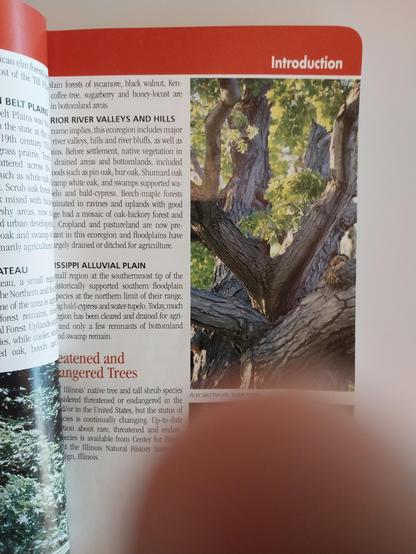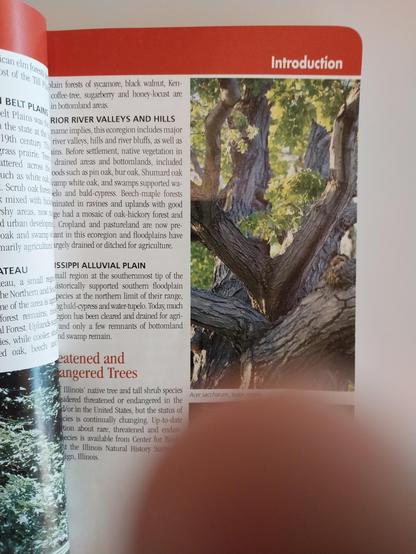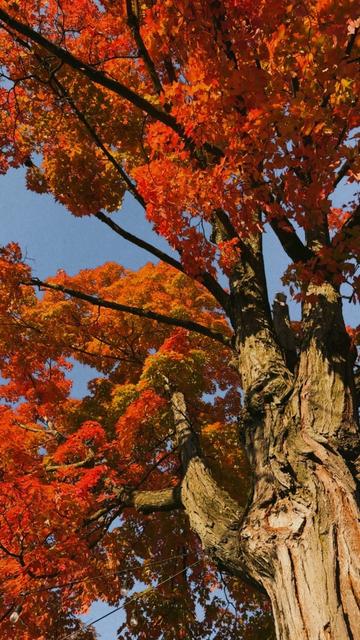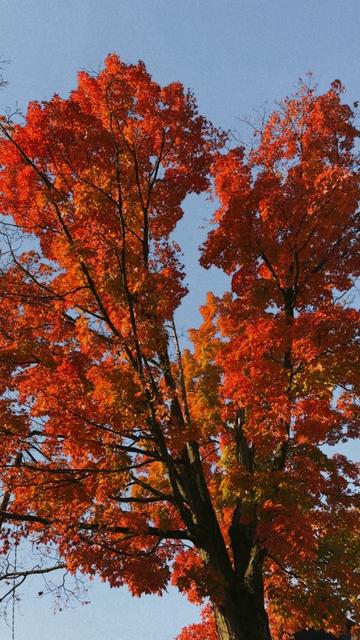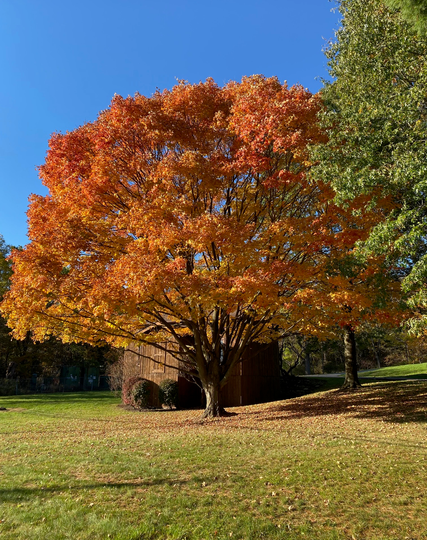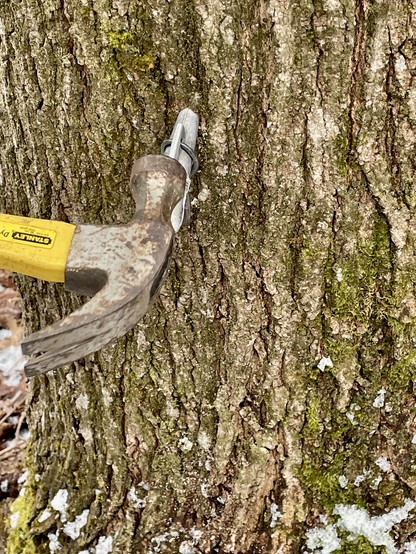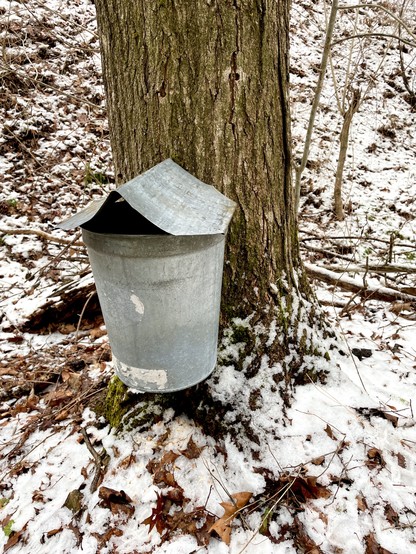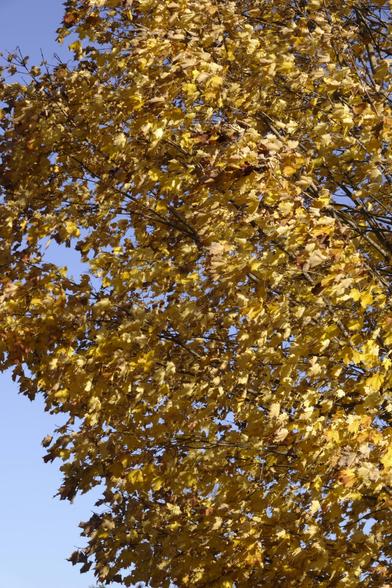My logic for the team name. I got it from the NHL team, Snivy and Tepig are both from Unova, which is based on NYC, and New York's state tree is the sugar maple. #torontomapleleafs #mapleleafs #sugarmaple #pokemon #art #fanart #digital #pokemonmysterydungeon #pokemonsupermysterydungeon #snivy #tepig
My logic for the team name. I got it from the NHL team, Snivy and Tepig are both from Unova, which is based on NYC, and New York's state tree is the sugar maple. #torontomapleleafs #mapleleafs #sugarmaple #pokemon #art #fanart #digital #pokemonmysterydungeon #pokemonsupermysterydungeon #snivy #tepig
#MapleSyrup update! This is what I collected this morning. That grey bucket is five gallons, for scale. I think it’s just over 2 gallons of actual #sap.
I’m told some folks toss out the ice, but when I eat it it tastes sweet to me, so I always just put it all in there.
Are you #tapping #trees this year?
#EatLocal #FoodForest #ForestFood #NativeFoods #WildFoods #MapleTapping #SugarMaple #SugarSeason
“Leave it to Nature to appoint the days, whether the same as in neighboring States or not, and let the clergy read her proclamations, if they can understand them. Behold what a brilliant drapery is her woodbine flag!”
#Thoreau Autumnal Tints
Months pass too quickly
Two-thirds behind already
Better unmeasured
#Haiku #OneHaikuADay #WritersCollective #writingcommunity #BackToHaiku #USA #Ohio #October #Autumn #Fall #Time #Months #Days #Weeks #Years #Finite #Infinite #Unmeasured #Trees #Maple #SugarMaple
October 21, 2024
So, while #EuropoeanEarthworms can be beneficial in gardens, they are not native to #Maine, and are actually an invasive species! (Native Maine earthworms were wiped out a long time ago, it seems...)
Invasive #Earthworms Rediscovered in #NorthernMaine #Forests
January 2022
"University of Maine researchers recently discovered invasive earthworms from Europe in Aroostook County, Maine timberlands, in what they say is the first reported sighting of the creatures in northern Maine forests since 1979. The finding raises concerns that the worms may cause changes in the forest ecosystem, from a slowing of tree regeneration to a release of carbon from the soil.
"Joshua Puhlick, formerly a research associate at the UMaine School of Forest Resources and now a scientist at The Jones Center at Ichauway in Georgia, found the worms while sampling soils as part of a sustainable forestry initiative at three research plantations. 'We were collecting soils and looking at the influence of forestry management on soil properties when we happened to discover earthworms at two of our sites,' he said. 'It was a pretty big deal to find them because we weren’t expecting to see them in northern Maine.'
"European earthworms were found in all 18 research plots at the Nashville Plantation along Route 11 and in 2 of 15 plots near the Seven Islands campsite on the St. John River. At least two different species of non-native worms were identified.
"Native earthworms were extirpated from Maine and much of the rest of New England during the last Ice Age. European earthworms eventually found their way to most of the region through discarded fishing bait, the transportation of horticultural materials, and on logging machinery, but they weren’t believed to be widespread in northern Maine.
"'Earthworms can cause a lot of abrupt changes in forest ecosystems and influence forest health, and many natural resource managers are becoming increasingly alarmed about the presence of earthworms in Maine forests,' said Puhlick. 'Invasive plant species find it easier to make their way into forests after earthworm invasions, and that impacts tree regeneration. Worms also consume a lot of the organic horizon – the litter and duff layer – and redistribute some of it within the mineral soil, which changes carbon dynamics and could potentially release carbon back into the atmosphere.'
"The worms prefer forests of northern hardwoods because the leaf litter is less acidic than in coniferous forests, Puhlick explained, although earthworms have been reported in mixed forests as well. #SugarMaple forests are a particular concern.
"'This isn’t a new phenomenon in New England, but we often worry about the decline of sugar maple health,' he said. 'These earthworm populations can cause changes in soil dynamics that could lead to declining health in sugar maples. That’s something we’ll have to continue to evaluate.'
"Puhlick recommends that land managers in northern New England document where earthworm populations are found and monitor changes to forest conditions over time. They should also implement practices that will minimize the spread of earthworms and limit new introductions of worms across the forested landscape.
"'There are #ClimateChange impacts to our forests, invasive plant species, and now this,' he said. 'It’s just one more issue that forest managers are going to have to face.'"
Source:
https://northernwoodlands.org/discoveries/invasive-earthworms
#InvasiveSpecies #WormWednesday #NorthWoods #ProtectTheNorthWoods
Next thing... Vote! 👇⬇️✅
📜 Sugar Maple, tree of New York (1956)
🎨 Adobe Fresco 🗓 Mar 2024
#digitalwatercolor #adobefresco #statesymbol #sugarmaple #statetree #newyork #statethings
Tapped our Sugar Maple this weekend. I remember when, due to much colder temps, I wouldn’t until late February. But now the sap is usually running by late January, if not earlier. Last year we collected 35 liters of sap which, after boiling down, produced a quart of syrup.
Looking at the upcoming forecast it should be a good week for sap flow.
#MapleSugar #SugarMaple #Sugaring #ClimateChange #MapleSugaringMonday



